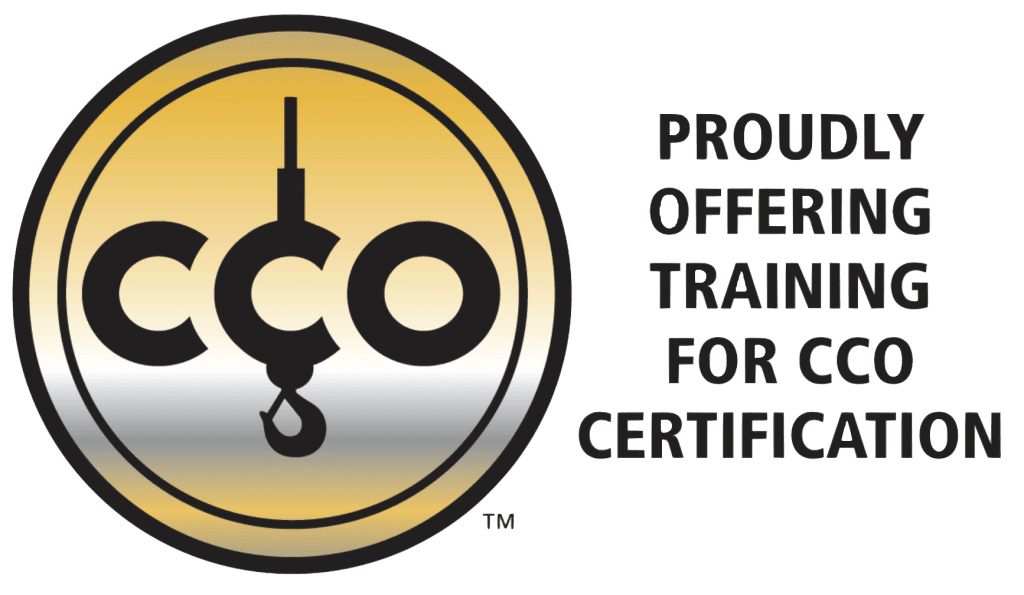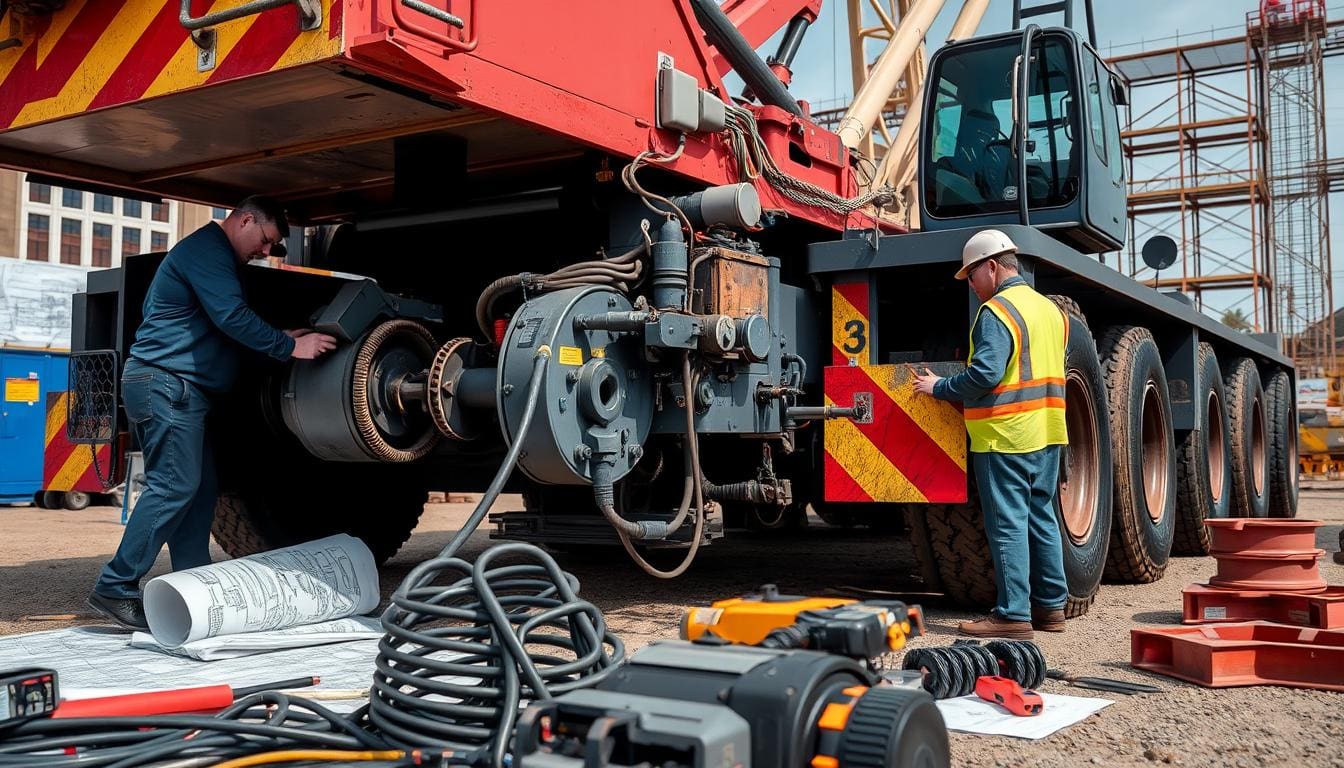Mobile cranes are key in construction and industry, lifting heavy loads with ease. But, they need careful upkeep due to their complex parts. A solid crane maintenance schedule is crucial to keep them running well for a long time.
It helps ensure these machines work at their best we focus on the details of mobile crane upkeep to keep them in top shape.
Safety is our top priority we know that crane safety maintenance is vital. It protects the people around these powerful machines.
We tips to keep your cranes strong against wear and time. Our goal is to give you a simple yet powerful guide to mobile crane maintenance.
Know the Mobile Crane Maintenance Essentials
Keeping mobile cranes in top shape is crucial for safety and efficiency. A good preventive maintenance plan helps cranes last longer and avoids unexpected breakdowns. This part talks about the key steps to keep mobile cranes running well, including regular checks and the importance of keeping them in good condition.
Defining Preventive Maintenance for Mobile Cranes
Preventive maintenance means doing regular checks and fixing small problems before they get big. It includes tasks like oiling moving parts, checking fluids, and inspecting the hook. This way, cranes work without issues.
The Impact of Regular Maintenance on Crane Longevity
Regular care makes mobile cranes last longer. It keeps them running smoothly and avoids big problems. Studies show that taking good care of cranes means they work better for longer.
Key Components Involved in Mobile Crane Maintenance
Mobile cranes rely on their parts being in good shape. Important parts like the boom, hook block, and brakes need regular checks. Keeping these parts in top condition is vital for safety and performance.
Mobile Crane Maintenance: Key Procedures and Best Practices
Keeping mobile cranes running well is all about good maintenance. We know that keeping up with maintenance can make a crane last longer and work better. Here, we share the key steps and smart ways to keep mobile cranes in top shape.
- Regular Inspection and Servicing: It’s vital to check and fix every part of the crane often. This means looking at the hydraulic systems, engines, and how strong the structure is.
- Lubrication: Keeping everything well-lubricated helps prevent damage. It’s a simple way to make your crane last longer.
- Replacement of Worn-Out Parts: Finding and swapping out old parts can stop big problems. It also keeps everyone safe.
- Documentation: Keeping records of maintenance helps track the crane’s health. It also makes planning for future checks easier.
These steps are more than just routine tasks. They are key to keeping mobile cranes safe and working well. By following these best practices, you’re setting up your crane for success over time.
Inspection Checklists for Your Mobile Crane
Keeping mobile cranes safe and working well means following strict inspection and maintenance rules. We’ll look at key parts of making good inspection plans. This includes knowing when to inspect cranes, and following the maker’s maintenance advice.
Developing a Daily Mobile Crane Inspection Routine
Having a daily inspection list is key for keeping mobile cranes in top shape. This list should check the crane’s mechanical and hydraulic systems. It should also look at safety features like hooks, ropes, and emergency stops.
Monthly and Annual Inspections: What to Include
- Structural Integrity: Checking for signs of wear and tear or any structural damage.
- Operational Mechanics: Ensuring all moving parts are functioning correctly.
- Safety Features: Verification that all safety mechanisms are in full operation.
Regular crane checks are crucial for following rules and keeping the crane ready to work.
Understanding Manufacturer-Specific Maintenance Requirements
Each crane model has its own special needs and weak spots, based on the maker’s guidelines. It’s important to look at the crane’s maintenance manual to know what’s needed. This way, each crane gets the care it needs, keeping it safe and working well.
Identifying Common Issues in Mobile Cranes
Keeping mobile cranes in top shape is key. It’s important to spot and fix crane wear and tear and common crane malfunctions quickly. This prevents downtime and saves money. We’ll share some ways to prevent these problems.
- Hydraulic Issues: Hydraulic problems are common. Look out for odd noises, slow movement, and leaks. These often come from not keeping up with maintenance.
- Electrical Problems: Electrical issues can stop the crane from working right. Signs include odd movements and controls that don’t work. Regular checks can catch wiring problems early.
- Structural Integrity: Cranes can wear out, showing signs like cracks or bends. These usually happen from carrying too much weight. They need quick fixes for safety.
- Mechanical Wear: Parts like bearings and gears wear out without care. Listen for loud noises and feel for jerky movements. These signs mean it’s time for a check-up.
Regular checks and a strict maintenance plan are key. They help avoid common crane malfunctions. Fixing problems fast keeps cranes running smoothly. This boosts work efficiency and safety. Knowing how to handle mobile crane troubleshooting makes operations better.
How to Ensure Safety During Mobile Crane Operations
Keeping crane operations safe is key for construction and manufacturing. We focus on training, safety rules, and regular checks. This ensures everything runs smoothly.
Training Requirements for Crane Operators and Maintenance Teams
Good training is the backbone of safe crane use. It’s vital for both new and experienced operators. Our training covers:
- Basic safety rules for cranes.
- How to handle emergencies.
- Staying up-to-date with new tech.
- Training for maintenance teams on the latest standards.
Implementing a Safety Protocol for Maintenance Procedures
Strong safety rules are needed for crane maintenance. We make sure every maintenance step is watched by experts. This reduces risks:
- Checking for safety before maintenance starts.
- Clear rules for regular and emergency maintenance.
- Updating rules with new safety information.
Auditing and Improving Safety Measures in Crane Maintenance
Regular safety checks are essential for crane maintenance. We do these checks every quarter. They include:
- Checking if safety rules are followed.
- Seeing if training works.
- Looking into any incidents to improve safety.
The Role of Technology in Modern Mobile Crane Maintenance
Mobile crane operations are changing with the introduction of smart systems. Predictive maintenance, backed by advanced data analysis, is key. It helps prevent machine failures before they happen. This approach boosts crane performance and extends their life, saving costs in the long run.
Telematics in cranes has made real-time monitoring common. It tracks important crane data like load cycles and engine conditions this data helps plan maintenance better and faster. It also allows for quick action on any issues, reducing downtime.
Smart crane systems take maintenance to a new level they can automatically send alerts for maintenance, cutting down on errors these systems use sensors and software to predict when parts might wear out this shift towards smarter maintenance makes crane operations safer, more efficient, and cost-effective.




